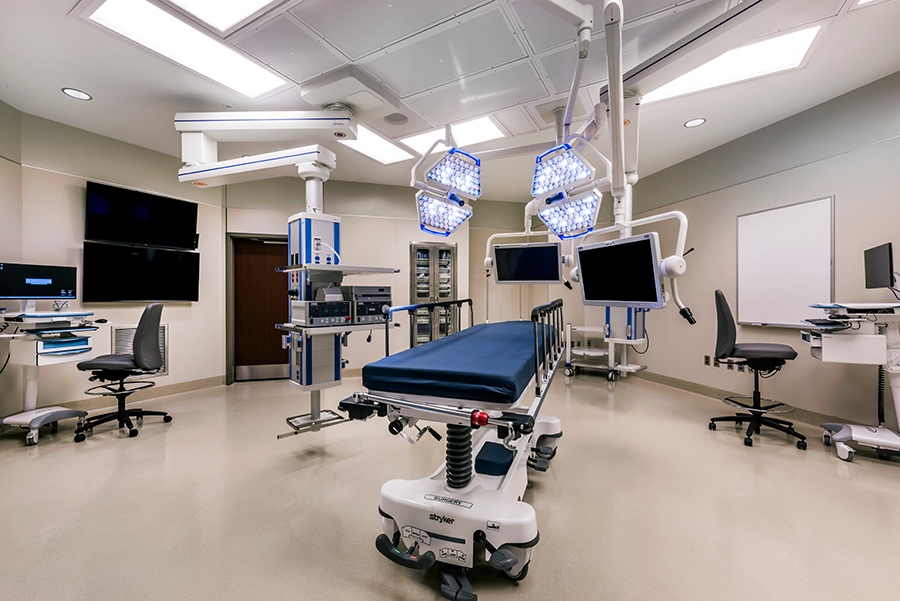Gynecologic Surgery & Gynecologic Oncology Rotations

An operating room at the Lauritzen Outpatient Center
During these immersive rotations, students will gain hands-on experience assisting in the management of both benign and malignant gynecologic conditions. As active members of the Gynecologic Surgery and Gynecologic Oncology teams, students will participate in the full continuum of patient care—including emergency room consultations, inpatient consults from other services, and comprehensive surgical care spanning pre-operative evaluation, intra-operative participation, and post-operative management. These rotations are designed to deepen clinical knowledge, sharpen surgical skills, and foster collaborative, patient-centered care.
During the clerkship, students will become familiar with the following topics:
- Normal menstrual cycle, amenorrhea, and abnormal uterine bleeding
- Normal and abnormal puberty
- Contraception and sterilization
- First-trimester bleeding and abortion
- Uterine fibroids
- Menopause
- Infections - vaginitis, sexually transmitted infections, pelvic inflammatory disease
- Infertility
- Hirsutism and polycystic ovarian syndrome
- Vulvar disorders
- Pelvic relaxation and urinary incontinence
- Pelvic pain including dysmenorrhea, endometriosis, ectopic pregnancy
- Neoplasms of the vulva, cervix, uterus, ovaries, gestational trophoblastic disease
- Sexual assault
- Gynecological procedures: Tubal ligation and laparoscopy, hysteroscopy and dilation and curettage, hysterectomy (vaginal, abdominal, laparoscopic), surgery for urinary incontinence and pelvic relaxation, and surgery for gynecologic cancers.
Knowledge and Skills Expectations
By the end of these rotations, the students will be expected to competently:
- Write a complete operative note.
- Discuss the normal hospital course after a routine gynecological surgical procedure.
- Discuss the appropriate work-up and differential for postoperative low urine output, fever, and wound problems.
- Discuss the relevant history, examination, and laboratory or radiology work-up involved in emergent assessments of pelvic pain and abnormal vaginal bleeding.
- Briefly describe the differences between types of hysterectomies (supracervical, simple, radical, vaginal, laparoscopic).